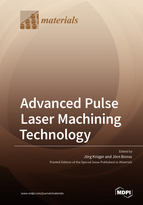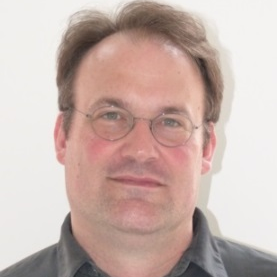Advanced Pulse Laser Machining Technology
A special issue of Materials (ISSN 1996-1944). This special issue belongs to the section "Manufacturing Processes and Systems".
Deadline for manuscript submissions: closed (31 October 2021) | Viewed by 48063
Special Issue Editors
Interests: pulse laser material processing; laser surface functionalization; laser applications for the preservation of the cultural heritage; laser safety and secondary hazards
Interests: laser–matter interaction; femtosecond laser technology; laser ablation; ultrashort laser pulses and applications; micro- and nano-structured surfaces; surface functionalization by of laser-textured surfaces; biomimetics; ultrafast microscopy; time-resolved spectroscopy; plasmonics; laser processes in photovoltaics; laser safety
Special Issues, Collections and Topics in MDPI journals
Special Issue Information
Dear Colleagues,
Advanced Pulse Laser Machining Technology is a rapidly growing field to tailor special industrial and scientific applications. This is significantly driven by the availability of high-repetition rate laser sources and novel beam delivery concepts.
This Special Issue focuses on developments in areas of surface and volume laser material processing, including spatial and temporal beam shaping, Bessel-beam dicing, direct laser interference patterning (DLIP), laser-induced forward transfer (LIFT), pulse burst machining, waveguide writing, and two-photon polymerization. Additionally, limitations of modern laser processing caused by failure of laser optics or unwanted secondary hazards like X-ray emission are addressed.
Here, we would like to attract contributors from industry and academics. This Special Issue shall bundle original research and review articles of the latest achievements.
Dr. Jörg Krüger
Dr. Jörn Bonse
Guest Editors
Manuscript Submission Information
Manuscripts should be submitted online at www.mdpi.com by registering and logging in to this website. Once you are registered, click here to go to the submission form. Manuscripts can be submitted until the deadline. All submissions that pass pre-check are peer-reviewed. Accepted papers will be published continuously in the journal (as soon as accepted) and will be listed together on the special issue website. Research articles, review articles as well as short communications are invited. For planned papers, a title and short abstract (about 100 words) can be sent to the Editorial Office for announcement on this website.
Submitted manuscripts should not have been published previously, nor be under consideration for publication elsewhere (except conference proceedings papers). All manuscripts are thoroughly refereed through a single-blind peer-review process. A guide for authors and other relevant information for submission of manuscripts is available on the Instructions for Authors page. Materials is an international peer-reviewed open access semimonthly journal published by MDPI.
Please visit the Instructions for Authors page before submitting a manuscript. The Article Processing Charge (APC) for publication in this open access journal is 2600 CHF (Swiss Francs). Submitted papers should be well formatted and use good English. Authors may use MDPI's English editing service prior to publication or during author revisions.
Keywords
- Advanced ultrashort-laser technology
- Bessel-beam laser dicing
- Direct laser interference patterning (DLIP)
- High-repetition rate ultrafast laser processing
- Laser-induced forward transfer (LIFT)
- Limitations of laser optics
- Pulse burst machining
- Spatial beam shaping for precision machining
- Temporal beam shaping for precision machining
- Two-photon polymerization
- Volume processing, waveguide writing
- X-ray hazards during ultrafast laser processing








